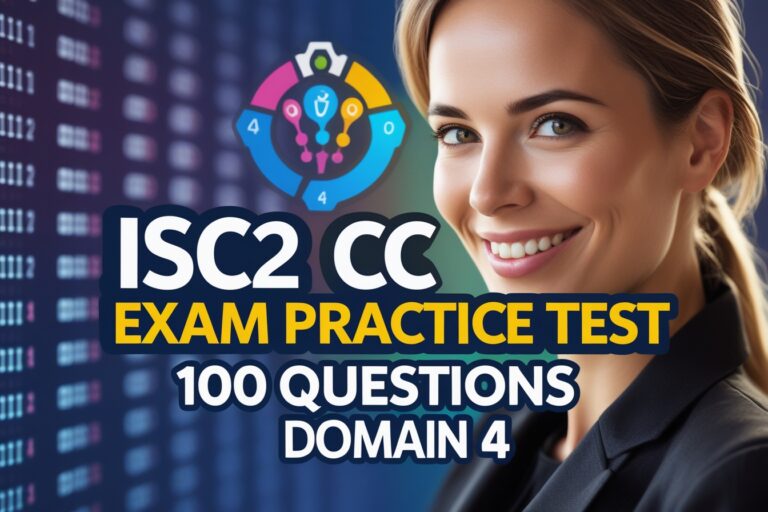1. The transfer mode of a network that involves setting up a dedicated end to end connection is called ………
A) Circuit switching
B) Message switching
C) Telegraph switching
D) Packet switching
2. If …………………… is used in computer networks, the sending PC first establishes a link with the receiving link.
A) Packet switching
B) Message switching
C) Telegraph switching
D) Circuit switching
3. A telecommunication network is designed primarily for carrying voice signals which consist of ………..
i) access network that connects the subscribers to the telephone exchanges.
ii) hierarchy of telephone exchanges that switch the voice channels.
iii) trunk network that interconnects the telephone exchanges
A) i and ii only
B) ii and iii only
C) i and iii only
D) All i, ii and iii
4. …………….. does not establish a dedicated path between two communicating devices, where each message is treated as an independent unit and includes its own destination and source address.
A) Packet switching
B) Message switching
C) Telegraph switching
D) Circuit switching
5. In, ………………… each intermediate device receives the message, stores it, until the next device is ready to receive it and then forwards it to the next device.
A) Packet switching
B) Message switching
C) Telegraph switching
D) Circuit switching
6. The major advantage of ……………… is that the dedicated transmission channel the computers establish provides a guaranteed data rate.
A) Packet switching
B) Message switching
C) Telegraph switching
D) Circuit switching
7. Which of the following is/are the disadvantage of circuit switching.
i) Dedicated channels require more bandwidth
ii) It takes a long time to establish a connection
iii) There is a delay in the data flow
iv) It cannot be used to transmit any other data even it the channel is free.
A) i, ii and iv only
B) ii, iii and iv only
C) i, iii and iv only
D) i, ii and iii only
8. State whether the following statements are correct for the advantages of message switching.
i) Message switching provides synchronous communication across the time zones
ii) In message switching, the network devices share the data channels.
iii) It reduces network traffic congestion.
A) i and ii only
B) ii and iii only
C) i and iii only
D) All i, ii and iii
9. In ……………….., messages are broken up into packets, each of which includes a header with source, destination and intermediate node address information.
A) Packet switching
B) Message switching
C) Telegraph switching
D) Circuit switching
10. In ……………… if a certain link in the network goes down during the transmission, the remaining packets can be sent through another route.
A) Circuit switching
B) Message switching
C) Telegraph switching
D) Packet switching
11. In ………………… , all the packets travel through t he logical connection established between the sending device and receiving device.
A) Circuit switching
B) Message switching
C) Virtual circuit packet switching
D) Datagram packet switching
12. …………….. increases the bandwidth of the network by allowing many devices to communicate through the same network channel.
A) Circuit switching
B) Message switching
C) Virtual circuit packet switching
D) Datagram packet switching
13. Which of the following is/are the disadvantages of virtual circuit packet switching.
i) The switching node requires more processing power because the packet switching protocols are more complex.
ii) A switching node unable to route the packet as and when required.
iii) Packets are more easily lost on their route, hence sequence numbers are required to identify the missing packets.
A) i and ii only
B) ii and iii only
C) i and iii only
D) All i, ii and iii
14. Email and Hop-by-Hop Telex forwarding are examples of …………….. systems.
A) Circuit switching
B) Message switching
C) Virtual circuit packet switching
D) Datagram packet switching
15. …………….. is also known as store-and-forward switching since the messages are stored at intermediate nodes in route to their destinations.
A) Circuit switching
B) Message switching
C) Virtual circuit packet switching
D) Datagram packet switching
16. …………… networks do not require a circuit to be established and allow many pairs of nodes to communicate almost simultaneously over the same channel.
A) Circuit switching
B) Message switching
C) Telegraph switching
D) Packet switching
17. ……………….. is used to optimize the use of the channel capacity available in a network, to minimize the transmission latency and to increase the robustness of communication.
A) Circuit switching
B) Message switching
C) Telegraph switching
D) Packet switching
18. The most well-known use of packet switching is the …………
A) PSTN
B) Email
C) Internet
D) Hop-by-Hop Telex
19. Which of the following is/are the advantages of datagram packet switching.
i) Here the call setup phase is avoided, thus if a station wishes to send only one or few packets datagram delivery will be quicker.
ii) It is more primitive and flexible
iii) It is inherently more reliable, if a node fails, subsequent packets may find an alternate route
A) i and ii only
B) ii and iii only
C) i and iii only
D) All i, ii and iii
20. The telephone network of bi-directional real-time transfer between computer is the application of ………….. network.
A) Circuit switching
B) Message switching
C) Telegraph switching
D) Packet switching
Answers
1. A) Circuit switching
2. D) Circuit switching
3. D) All i, ii and iii
4. B) Message switching
5. B) Message switching
6. D) Circuit switching
7. A) i, ii and iv only
8. C) i and iii only
9. A) Packet switching
10. D) Packet switching
11. C) Virtual circuit packet switching
12. C) Virtual circuit packet switching
13. C) i and iii only
14. B) Message switching
15. B) Message switching
16. D) Packet switching
17. D) Packet switching
18. C) Internet
19. D) All i, ii and iii
20. A) Circuit switching









